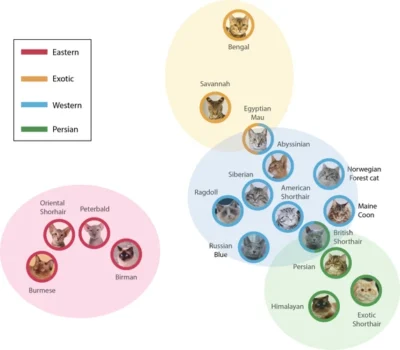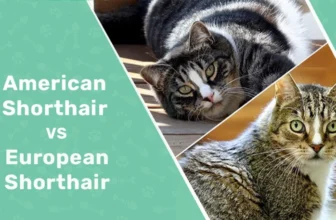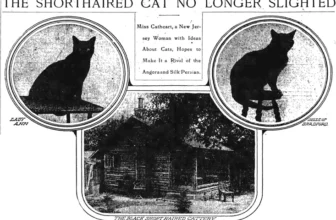It’s no secret that American Shorthair cats are a beloved breed of feline companions. However, as the years go by, the population of American Shorthair cats is gradually decreasing. This is largely due to a lack of genetic diversity within the breed, which can lead to various health and behavioral issues. As cat lovers, it’s important to understand the significance of genetic diversity in the evolution of American Shorthair cats. In this article, we’ll explore the reasons why genetic diversity matters, major genetic issues that currently affect the breed, and the role that genetic diversity will play in the future evolution of American Shorthair cats.
Why Genetic Diversity Matters for American Shorthair Cats
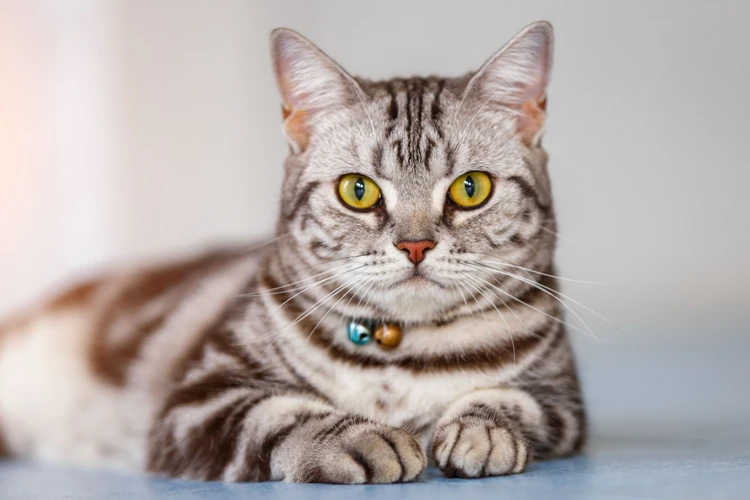
American Shorthair cats have been a popular breed for a long time, with a rich history of domestication and evolution. However, the importance of genetic diversity in this breed has often been overlooked. Genetic diversity plays a crucial role in the health, appearance, and behavior of American Shorthair cats. This article will explore the significance of genetic diversity for this breed and how it affects their future evolution. Understanding the importance of genetic diversity is essential for cat breeders and pet owners alike. Let’s delve into this important topic and explore why it matters for American Shorthair cats. If you want to learn more about the history of this breed, you can check our previous article on this topic.
Genetic Health
Genetic diversity plays a crucial role in maintaining the good and robust health of any breed, and the American Shorthair cats are no different. The **genetic health** of felines determines their physical well-being and immunity against various illnesses. An American Shorthair cat with good genetic health is less susceptible to genetic health issues and is more likely to live a long and fulfilling life.
Good genetic health is achieved by having a diverse gene pool, which allows for the mitigation of potential genetic health issues. This diversity is achieved by breeding American Shorthair cats with different genetic ancestry, thus allowing for the transfer of traits from different genetic lineages. A diverse gene pool ensures the cat’s immunity against diseases, including potential illnesses that may be prevalent in certain genetic backgrounds.
Maintaining genetic diversity means a reduced incidence of environmental stresses, which can have a significant impact on the health of American Shorthair cats. Genetic diversity can also assist with the removal of potential inherited health issues, stopping them from continuing into future generations.
Inbreeding or breeding from closely related cats can lead to genetic health issues that may not become evident until several generations later. Examples of such health issues include breed-specific recessive genetic disease, skeletal abnormalities, and other physical defects. Such issues can be reduced or eliminated through genetic diversity and ensuring that cats are bred with cats that have different genetic backgrounds.
Genetic health is an essential element in the maintenance of American Shorthair cats’ health. Genetic diversity is key in keeping this breed healthy and resistant to a variety of genetic health issues. By breeding American Shorthair cats with different genetic backgrounds, breeders can ensure that they maintain genetic diversity, reduce the incidence of inherited health issues, and create strong and healthy cats that can live a long and happy life.
Genetic ancestry in American Shorthair cats plays an important role in maintaining genetic diversity, allowing for breeders to selectively breed cats with different genetic backgrounds and traits to create a robust and healthy breed.
More Appealing Appearance
When it comes to the appearance of American Shorthair cats, genetic diversity plays a vital role. Inbreeding can lead to a lack of genetic variation, which in turn may result in breeds with undesirable physical traits. By promoting genetic diversity, we open the door to a wider range of possibilities when it comes to the appearance of American Shorthair cats.
In terms of appearance, one of the benefits of genetic diversity is that it can lead to a more unique and diverse range of coat patterns and colors. This variation can make American Shorthair cats more appealing to potential adopters, leading to increased demand for the breed. Additionally, genetic diversity can help to prevent certain physical traits from becoming more prevalent within the breed, such as health issues or skull malformations.
However, it is important to note that simply promoting genetic diversity is not a panacea for all issues related to cat breeding and ownership. There are many factors that go into creating a healthy and attractive breed, and genetic diversity is just one of them. While genetic diversity can help to promote a healthier and more diverse breed, it is important to ensure that this diversity is sustainable and does not lead to negative consequences elsewhere.
Genetic diversity plays a significant role in the appearance of American Shorthair cats. By promoting genetic diversity, breeders can create a more unique and diverse range of physical traits, preventing certain harmful traits from becoming more prevalent, and increasing the overall appeal of the breed.
Positive Behavioral Characteristics
American Shorthair cats with higher genetic diversity tend to display more positive behavioral characteristics than those from a more limited gene pool. The result is a cat breed that is healthier both physically and mentally.
Increased Adaptability: Genetic diversity enables American Shorthair cats to adapt sufficiently to varying environmental conditions. They are able to quickly adapt to changes in their surroundings like different climates and living conditions.
Improved Cognitive Abilities: American Shorthair cats from a diverse genetic pool exhibit improved cognitive abilities. They tend to communicate and navigate their surroundings in a more efficient manner. This trait makes them better problem-solvers when compared to cats with limited genetic diversity.
Enhanced Social Skills: American Shorthair cats with higher genetic diversity have been observed to be more sociable than their counterparts with less genetic diversity. This makes them more loving, playful, and affectionate companions.
The importance of genetics on a cat’s personality and adaptability is increasingly becoming evident as more studies are conducted. As seen in the table below, cats with high genetic diversity tend to exhibit more desirable behavioral characteristics.
| Positive Behavioral Characteristics | Genetically Diverse Cats | Genetically Limited Cats |
|---|---|---|
| Adaptability | Higher | Lower |
| Cognitive Abilities | Improved | Lesser |
| Social Skills | Better | Lesser |
The evolution of American Shorthair cats has been influenced by other breeds, such as the European Shorthair, leading to an increase in genetic diversity. However, ensuring a high variety of genetic material in future generations of American Shorthair cats is important to ensure a healthy and robust breed.
Major Genetic Issues in American Shorthair Cats
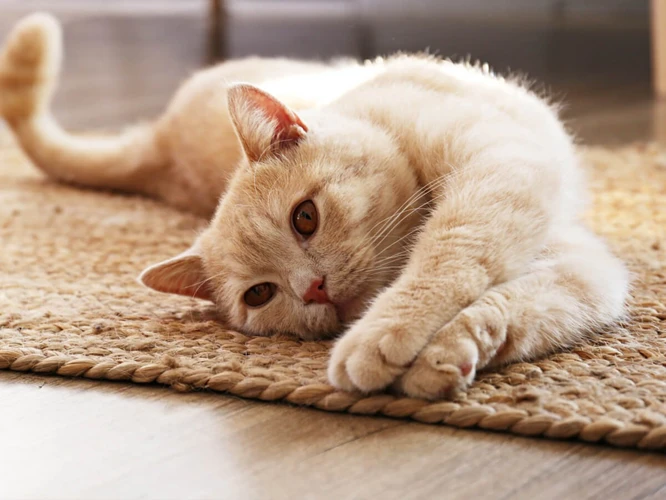
Despite being a generally healthy breed, American Shorthair cats are still susceptible to a range of genetic issues that can cause significant problems throughout their lifespan. These genetic issues range from predispositions to specific diseases to physical and behavioral defects that can impact their quality of life. If not properly addressed, these genetic issues can even reduce their lifespan. Understanding the major genetic issues that affect American Shorthair cats is important for every pet owner, to ensure their felines live a healthy and long life.
Predisposition to certain diseases
American Shorthair cats are generally healthy, but they do have a predisposition to certain diseases. These genetic conditions can be inherited if breeding is not done carefully. Some of the most common conditions that American Shorthair cats are predisposed to include hip dysplasia, hypertrophic cardiomyopathy, and polycystic kidney disease. It is important for breeders to test for these conditions to avoid passing them on to future generations of cats.
Hip dysplasia is a genetic condition that affects the hip joint of American Shorthair cats, which can lead to lameness and arthritis. Hypertrophic cardiomyopathy is a condition in which the walls of the heart become abnormally thick, which can lead to heart failure. Lastly, polycystic kidney disease is a genetic condition that causes cysts to form on the kidneys, which can lead to kidney failure.
Breeding cats that are carriers of any of these diseases with another carrier can greatly increase the likelihood of passing on these genetic defects to their offspring. Responsible breeders will screen their cats for these conditions before deciding to breed them.
It is important to note that while genetic predisposition is a concern, it does not mean that every American Shorthair cat will develop these conditions. However, being aware of these conditions and taking preventative measures such as genetic testing can help to minimize the risk of future generations of American Shorthair cats developing these health issues.
Genetic diversity plays a crucial role in maintaining the health and well-being of American Shorthair cats. By understanding the potential genetic predispositions and taking steps to prevent future generations from inheriting these conditions, we can ensure a healthier future for these beloved felines.
Physical and behavioral defects
As with any breed of cat, American Shorthair cats can experience physical and behavioral defects as a result of genetic issues. Some of the more common physical issues include hypertrophic cardiomyopathy, which is a condition that affects the heart, and hip dysplasia, which is a genetic defect that affects the hips. These issues can cause discomfort, pain, and reduced movement in affected cats.
Behavioral issues can also arise as a result of genetic defects. Aggression, anxiety, and inappropriate elimination are all examples of behavioral problems that can be caused by genetic factors. American Shorthair cats may experience a range of other problems related to genetics, such as allergies, skin conditions, and dental issues.
It’s important to note that not all American Shorthair cats will experience genetic defects, but there is a higher likelihood of such defects occurring in cats that have a limited gene pool due to inbreeding. This is why genetic diversity is so critical to the health and well-being of the breed.
Ensuring that American Shorthair cats have access to a wide range of genetic material can help prevent the development of physical and behavioral defects. By breeding cats from different bloodlines, breeders can create stronger, healthier animals that are less susceptible to inherited diseases.
By maintaining genetic diversity, breeders can ensure that the breed remains adaptable to changing conditions. This is especially important as environmental factors and human intervention continue to impact the evolution of American Shorthair cats.
Studies have shown that the European Shorthair is a significant contributor to the genetic diversity of the American Shorthair breed. This highlights the importance of looking beyond breed-specific gene pools and considering the broader genetics of the feline population as a whole.
Ultimately, by prioritizing genetic diversity in breeding programs, breeders can help ensure the long-term health and sustainability of American Shorthair cats. This will require a concerted effort to maintain and expand the gene pool, as well as a commitment to ethical and responsible breeding practices.
It’s important to recognize that genetic diversity is not just beneficial for American Shorthair cats, but it is a critical component of their future evolution and survival as a breed. By taking steps to preserve and build upon genetic diversity, we can help ensure that these beloved felines thrive for generations to come.
Reference: /evolution-american-shorthair-cats/
Reduced lifespan
Reduced lifespan is another issue that can arise in American Shorthair cats that lack genetic diversity. When there is a lack of genetic variation, it can increase the likelihood of health issues and susceptibility to diseases that can ultimately lead to a shorter lifespan.
According to a study, “Genetic Variation and Susceptibility to Disease” by David Goldstein and Andrew F. Read, many of the diseases that occur in American Shorthair cats are due to inbreeding, which is often done to maintain a certain look or characteristic. Inbreeding can cause a reduction in genetic variation, which can then lead to increased susceptibility to different diseases and disorders, a phenomenon known as inbreeding depression.
Inbreeding depression has been linked to a reduced lifespan in American Shorthair cats. A lack of genetic diversity can lead to increased rates of inherited genetic diseases such as polycystic kidney disease and hypertrophic cardiomyopathy. These diseases can become more common if breeding is done within a small gene pool with limited variations.
Below is a table showing some of the common diseases found in American Shorthair cats that can lead to reduced lifespan:
| Disease Name | Description |
|---|---|
| Feline Lower Urinary Tract Diseases (FLUTD) | A group of disorders that affect the bladder and urethra, leading to difficulty urinating and extreme discomfort. |
| Polycystic Kidney Disease (PKD) | A hereditary disease causing fluid-filled cysts to develop in the kidneys, ultimately leading to kidney failure and death. |
| Hypertrophic Cardiomyopathy (HCM) | A thickening of the heart’s walls, making it harder for the heart to efficiently pump blood. |
| Progressive Retinal Atrophy (PRA) | Progressive loss of vision due to the degeneration of photoreceptor cells in the eye. |
Although there is a clear negative impact on the lifespan of American Shorthair cats with a lack of genetic diversity, there is a solution: increasing genetic diversity through selective breeding or outcrossing. By introducing new genetics into a breeding program, breeders and owners can reduce the likelihood of inherited genetic diseases and increase the lifespan of American Shorthair cats.
However, increasing genetic diversity can bring about its own challenges. It can be difficult to find suitable outcrosses that don’t introduce new health issues or undesirable traits, and outcrossing can take time to establish in breeding programs.
For more information on the future evolution of American Shorthair cats and the impact of domestication on their genetic diversity, check out our articles about the evolution of American Shorthair cats compared to other breeds and the impact of domestication on the evolution of American Shorthair cats.
The Future of American Shorthair Cats: The Role of Genetic Diversity
As American Shorthair cats become increasingly popular, it’s important to consider the future of this beloved breed. One key factor that will determine their longevity and adaptability is their genetic diversity. In order to thrive in the future, American Shorthair cats must maintain and increase their genetic diversity. But what exactly does that mean? And what steps can be taken to ensure a diverse gene pool for these feline friends? Let’s explore the role of genetic diversity in the future evolution of American Shorthair cats.
Benefits of genetic diversity for future evolution
When it comes to the future evolution of American Shorthair Cats, genetic diversity plays a crucial role in their survival and well-being. Genetic diversity refers to the variety of genes within a particular species or population, and it can have several benefits for these cats.
Improved Disease Resistance
One of the most significant benefits of genetic diversity is improved disease resistance. A diverse gene pool allows for the mixing of different genetic traits, and this can lead to a broader range of immune responses. As a result, American Shorthair Cats with more genetic diversity are better able to fight off various diseases and infections.
Adaptability to Environmental Changes
Another benefit of genetic diversity is that it can help American Shorthair Cats adapt to environmental changes. With a diverse gene pool, these cats are more likely to possess a range of traits that enable them to thrive in different environments. This means that in the face of climate change or other environmental challenges, cats with greater genetic diversity have a better chance of survival.
Decreased Risk of Inbreeding
Genetic diversity also helps to decrease the risk of inbreeding, which can lead to various health problems and inherited diseases. When cats breed with closely related individuals, they are more likely to inherit the same harmful genes, and this can lead to genetic defects. By increasing genetic diversity through outbreeding, American Shorthair Cats can avoid these issues and maintain a healthier population.
To summarize, genetic diversity is essential for the future evolution and survival of American Shorthair Cats, as it leads to improved disease resistance, adaptability to environmental changes, and decreased risk of inbreeding. It is vital to maintain a diverse gene pool through outbreeding and other means to ensure the health and wellbeing of these cats for generations to come.
| Benefits of Genetic Diversity for Future Evolution |
|---|
| Improved disease resistance |
| Adaptability to environmental changes |
| Decreased risk of inbreeding |
Challenges of increasing genetic diversity
Increasing genetic diversity in American Shorthair cats is not without its challenges. Although it is a crucial factor in improving their overall health and well-being, breeders and cat lovers alike need to be aware of the challenges that come with increasing genetic diversity. Some of these challenges include:
1. Limited Gene Pool: A limited gene pool is a significant challenge for increasing genetic diversity. The American Shorthair cat breed was developed from cats that were brought over from Europe during colonization. There are only a limited number of cats available to breed within the breed’s gene pool, and inbreeding can lead to genetic problems.
2. Breeding Restrictions: Cat breeders are restricted by breeding regulations, which can limit the number of matings they can undertake. In some cases, breeders may also be restricted from breeding with certain cats due to genetic defects or certain DNA markers.
3. Genetic Compatibility: When it comes to breeding cats, it is important to pay attention to genetic compatibility. Not all cats are compatible or suitable for breeding, and a lack of genetic compatibility can hinder the success of breeding programs aimed at increasing genetic diversity.
4. Costs of Genetic Testing: In order to increase genetic diversity, cats need to undergo genetic testing to determine their suitability for breeding. This can be an expensive process and may limit the number of breeders who are willing to participate in breeding programs aimed at increasing genetic diversity.
5. Limited Genetic Diversity in Some Lines: Some cats may have limited genetic diversity in their pedigrees as a result of selective breeding over many generations. Breeders need to be aware of the limited genetic diversity of certain lines, which can affect genetic diversity in future generations.
To overcome these challenges, it is essential to implement breeding programs that are designed to increase genetic diversity in American Shorthair cats while still adhering to breeding standards and regulations. Additionally, breeders need to be proactive in researching cats’ genetic backgrounds and genetic compatibility to ensure more successful breeding programs.
Conclusion
After examining the significance of genetic diversity in the future evolution of American Shorthair Cats, it is clear that a diverse genetic pool is crucial for their well-being. Through promoting genetic diversity, we may be able to combat the major genetic issues that American Shorthair Cats are prone to, such as predisposition to certain diseases, physical and behavioral defects, and reduced lifespan.
Furthermore, genetic diversity can also contribute to positive characteristics such as improved overall health, more appealing appearance, and positive behavioral characteristics. Overall, facilitating genetic diversity in American Shorthair Cats can contribute to the evolution of a hardier, healthier and more resilient breed of feline.
However, challenges still exist in achieving genetic diversity due to factors such as limited genetic samples and a lack of public awareness regarding its importance. Therefore, concerted efforts from cat breeders, owners, and the general public are needed to ensure that the American Shorthair Cat gene pool is diverse and healthy.
In short, the future of American Shorthair Cats depends on the preservation and promotion of genetic diversity in the breed. With the right strategies and actions, we can ensure that the breed will continue to evolve and thrive for generations to come.
Frequently Asked Questions
What is genetic diversity and why is it important in American Shorthair cats?
Genetic diversity refers to the variety of genes present in a population. The more diverse a population’s genes are, the more resilient it is to environmental changes and the more adaptable it is over time. In American Shorthair cats, genetic diversity is important to maintain the health, appearance, and behavior of the breed.
How does genetic diversity affect the health of American Shorthair cats?
A lack of genetic diversity can lead to an increased risk of inherited diseases and health problems. By maintaining genetic diversity, the chances of inherited diseases are reduced, and cats are generally healthier overall.
How does genetic diversity affect the appearance of American Shorthair cats?
Genetic diversity in American Shorthair cats can lead to a more appealing appearance, with a wider range of coat colors, patterns, and textures possible. Inbreeding, on the other hand, can lead to a limited gene pool and less variation in appearance.
How does genetic diversity affect the behavior of American Shorthair cats?
Genetic diversity can lead to positive behavioral characteristics, such as increased intelligence, sociability, and adaptability. Inbreeding, on the other hand, can lead to behavioral problems such as aggression and anxiety.
What are some major genetic issues that American Shorthair cats face?
American Shorthair cats are predisposed to certain diseases such as hypertrophic cardiomyopathy, polycystic kidney disease, and diabetes. They also face physical and behavioral defects such as shortened tails and skull malformations.
Can genetic diversity help reduce the risk of inherited diseases in American Shorthair cats?
Yes, by maintaining genetic diversity, the chances of inherited diseases are reduced. A wider gene pool means a lower likelihood of both parents carrying the same recessive gene that could cause disease in their offspring.
What is the role of genetic diversity in the future evolution of American Shorthair cats?
Genetic diversity is crucial for the future evolution of American Shorthair cats. By maintaining a diverse gene pool, the breed will be better equipped to adapt and evolve to environmental changes and resist diseases that might develop in the future.
What are the benefits of genetic diversity for the future evolution of American Shorthair cats?
The benefits of genetic diversity for future evolution include a reduced risk of disease, the promotion of desirable traits, and increased adaptability to environmental changes. Genetic diversity can also lead to a wider range of appearance and behavior traits.
What challenges are faced in increasing genetic diversity in American Shorthair cats?
One of the challenges in increasing genetic diversity is avoiding inbreeding, which can lead to a further reduction in the gene pool. Another challenge is the limited number of cats available for breeding, making it difficult to maintain genetic diversity while also promoting desirable traits.
What is the importance of maintaining genetic diversity in purebred cat breeds like the American Shorthair?
Maintaining genetic diversity is crucial in purebred cat breeds like the American Shorthair to maintain overall health and adaptability. Inbred cats can face a higher risk of physical and behavioral defects and a shorter lifespan due to a limited gene pool.

